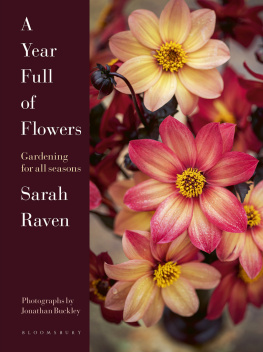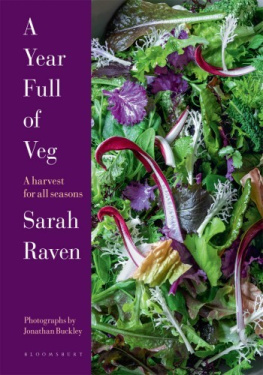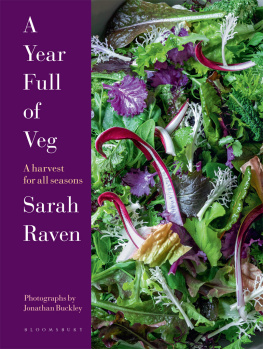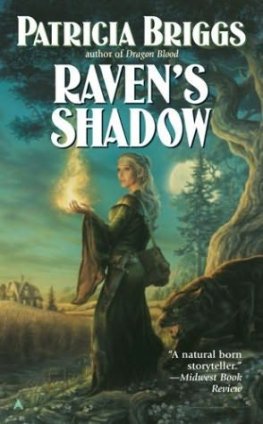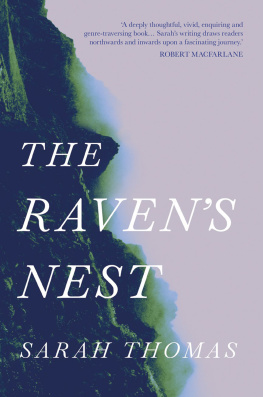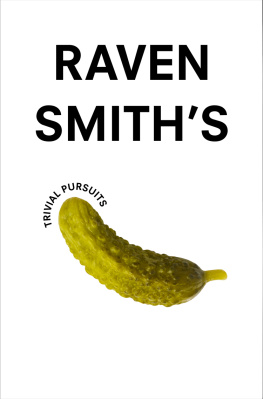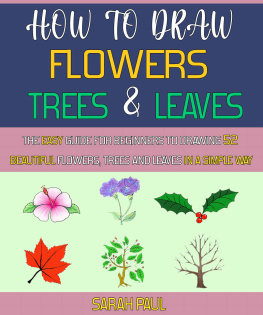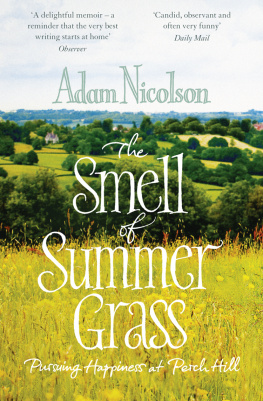Sarah Raven - A Year Full of Flowers
Here you can read online Sarah Raven - A Year Full of Flowers full text of the book (entire story) in english for free. Download pdf and epub, get meaning, cover and reviews about this ebook. year: 2021, publisher: Bloomsbury Publishing, genre: Home and family. Description of the work, (preface) as well as reviews are available. Best literature library LitArk.com created for fans of good reading and offers a wide selection of genres:
Romance novel
Science fiction
Adventure
Detective
Science
History
Home and family
Prose
Art
Politics
Computer
Non-fiction
Religion
Business
Children
Humor
Choose a favorite category and find really read worthwhile books. Enjoy immersion in the world of imagination, feel the emotions of the characters or learn something new for yourself, make an fascinating discovery.
- Book:A Year Full of Flowers
- Author:
- Publisher:Bloomsbury Publishing
- Genre:
- Year:2021
- Rating:4 / 5
- Favourites:Add to favourites
- Your mark:
- 80
- 1
- 2
- 3
- 4
- 5
A Year Full of Flowers: summary, description and annotation
We offer to read an annotation, description, summary or preface (depends on what the author of the book "A Year Full of Flowers" wrote himself). If you haven't found the necessary information about the book — write in the comments, we will try to find it.
A Year Full of Flowers — read online for free the complete book (whole text) full work
Below is the text of the book, divided by pages. System saving the place of the last page read, allows you to conveniently read the book "A Year Full of Flowers" online for free, without having to search again every time where you left off. Put a bookmark, and you can go to the page where you finished reading at any time.
Font size:
Interval:
Bookmark:



Contents

Gardening at home
Colour for a grey time of year
The surge of spring life
Tulipomania
When the world goes green
Scent, scent, scent
Full-blown, bosomy marvellousness
A circus of annuals rolls in
Dahliafantasia
Tender perennials give us a colour boost
Theres more to winter than Christmas


Introduction
My love of the natural world came from botanising trips I went on with my dad as a child, but when I started gardening as an adult, my interests took a rather different turn.
He could spend hours carefully walking through a bog or meadow in search of a tiny clump of rare orchids or clubmoss that had been recorded there. That bored me, but I loved the abundance of flowers we often found as incidentals in these spots anemones sweeping across woodland floors in March, fragrant bluebells in April, carpets of snakes head fritillary in the Thames Valley in May, and vipers bugloss and clouds of valerian on the shingle coast of Kent in June. If you put your foot down anywhere in these places, youd be crushing a carpet of colour. Thats the thing I found instantly inspiring and happy-making flower and colour and I still do. Its that lift, that same childlike pleasure Im looking for from my garden.
I remember a designer friend of mine saying gardens had to work in black and white, that they were only good if they had strong bones and architectural form all through the year. Colour was froth, a temporary distraction, and should be the least of ones priorities. I felt cowed at the time, aware that this was the opposite of the garden I was making.
More than twenty-five years on, Id say that a strong structural design is only part of it. Yes, you need the bones, but its the fleshing out with colour that gives me joy. I love topiary and hardworking evergreens and interesting foliage, the sort of thing traditional structuralists think make a garden. Ive worked on the bones of our garden, Perch Hill, over the years. We have some nice buildings which weve gradually restored, gardening the spaces between them. And we do have a small lawn, a little rice with our curry; I value its calm, but it doesnt excite me.


Wildflower scenes like those pictured on the left inspired me to become a gardener. My goal is for my garden (which is pictured on the right) to have a similar colour- and flower-packed look and feel.
What I love is different. I like plants jam-packed, as you might get in nature, and Im sure thats why I love plant trials, not just for the experimentation and for the lessons learnt, but for the visual results one plant, in many different forms, repeated over a large area as if it has spread there naturally.
Nature often produces a single flush of flower, but in a garden, one needs succession. Thats what Ive been working on at Perch Hill. We have different plants taking centre stage from one week and one month and one year to the next. I use so many annuals, biennials, tender perennials and bulbs, that the froth changes all the time. In fact, in parts of the garden, if you stood in one place in June, youd hardly recognise it the following June as so many of the plants will have changed. The bones are the same, but the colour-givers are often new. Its these waves of colour, rolling up into the garden one after another that keep me dreaming and thinking of new ideas.
Abundance is pretty easy to achieve during the full-on growing season when you have families like tulips, roses and dahlias up your sleeve, but there are almost equally strong performers in February and November, just not so many of them. That makes them doubly worth planting. Ive spent years trying to discover as many of those early and late performers as possible, to help maintain our high colour bar.
I want every direction you look in at Perch Hill to be like a May ball in full, dressed-up parade. Even in the trials, I want a sociable mix of different plants, not just one or two. I love playing with combinations until I find one that works on every level: structure, floweriness, staying power and a spirit-lifting surge of colour. Those are the combinations youll find here. There are no great rarities, no-tricky-to-grow challenging plants, but easy, life-enhancing colour and flower performers.
Perch Hill
We moved to Perch Hill in 1994 from London and found a rather ramshackle ex-dairy farm with a lot of concrete, corrugated iron and a small garden with a goldfish pond on the south side of the house. Since then, we converted the farm into an organic 90 acres, putting in new hedges on old lines, trying to encourage wildflowers into the meadows and introducing our own herd of Sussex cattle and a flock of Romney-cross sheep.
Like most farmhouse gardens, we have different areas given over to different purposes. The first garden I made was the cutting garden, and I used it mainly to trial plants for picking. I have now divided this area into two, one filled with perennials, the other with annuals, hardy and half-hardy, and biennials, with two or even three different crops in the same square metre of soil in one calendar year.
Dahlias and chrysanthemums are important to me and we made a trial garden just for them. Every year new varieties go in, gathered from my trips to Holland and elsewhere the previous autumn.

My younger daughter Molly and I having a picnic in one of the Perch Hill fields.

April dawn in the Farmhouse Garden where the colours are soft and cool.

August dawn in the dahlia trial beds in the Perennial Cutting Garden, where pretty much any colour (bar white and very pale) is included.
The western-most garden is also a trial garden, where we test out new annuals from seed, and recently I put in an area dedicated to experimenting with roses that are good for picking.
On the slope, we grow edible crops in an ornamental way, with lots of edible flowers, as well as salads and herbs in patterns of contrasting shapes and colours for the Perch Hill school kitchen.
There are also four purely ornamental gardens that are here for themselves and not for harvesting. Theres the Oast Garden, which is an extravagant mix of colour and structure (with salvias, cardoons, artichokes, dahlias and gladioli). Oasts traditionally have wooden balconies extending almost the full length of the building. These are called greenstages and are where hops would be stashed before being loaded into the kiln. We restored ours and cover it with pots all year.
Font size:
Interval:
Bookmark:
Similar books «A Year Full of Flowers»
Look at similar books to A Year Full of Flowers. We have selected literature similar in name and meaning in the hope of providing readers with more options to find new, interesting, not yet read works.
Discussion, reviews of the book A Year Full of Flowers and just readers' own opinions. Leave your comments, write what you think about the work, its meaning or the main characters. Specify what exactly you liked and what you didn't like, and why you think so.

